asparagus preserved three ways
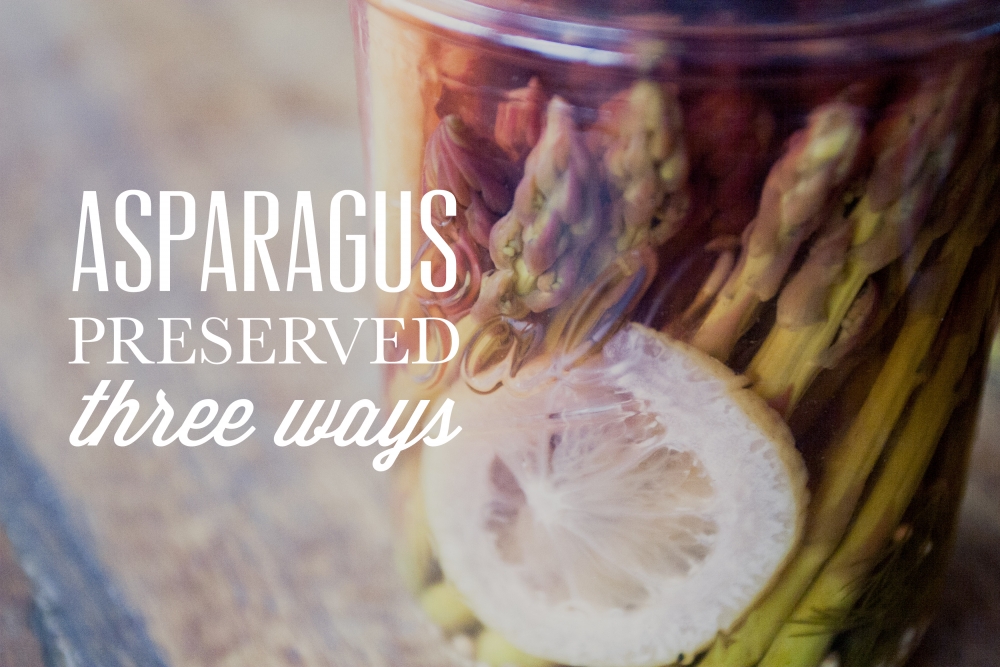
It's the season for asparagus, which means you can get it local and it's packed full of nutrients and perfect for preserving. We got 6 bunches of it at the Farmer's Market on Saturday, so in addition to eating a lot of it, I've been canning, lactofermenting, and freezing. It is my goal this summer to get produce for preserving from the Farmer's Market every week, and hopefully share it here. I'm super excited for all the knowledge I hope to gain through this process, as well as the delicious and nutritious foods we'll have when winter rolls 'round.
Each of these three ways of preserving have their own pros and cons, which I'll detail quickly:
Canning:
- pros - canned goods stay good for a year, can be stored at room temperature (which frees up space in your fridge/freezer), and doesn't always require salt or whey
- cons - requires an inital investment for equipment, sterilizes food which kills enzymes and some nutrients, requires heat energy
Loactofermenting:
- pros - easier than canning (in my opinion), doesn't require any special equipment or energy, doesn't diminish the nutrient content of food, and is a source of probiotics
- cons - food only lasts for 6 months (only 2 months if it is fruit), needs to be in cold storage (like a fridge or root cellar), lactofermented foods can be sort of an aquired taste, even fruit preserves require salt/whey
Freezing:
- probably the easiest method, also does a good job of locking in nutrients, keeps food good up to a year (longer in a deep freezer)
- takes up space in the freezer, foods have to be thawed
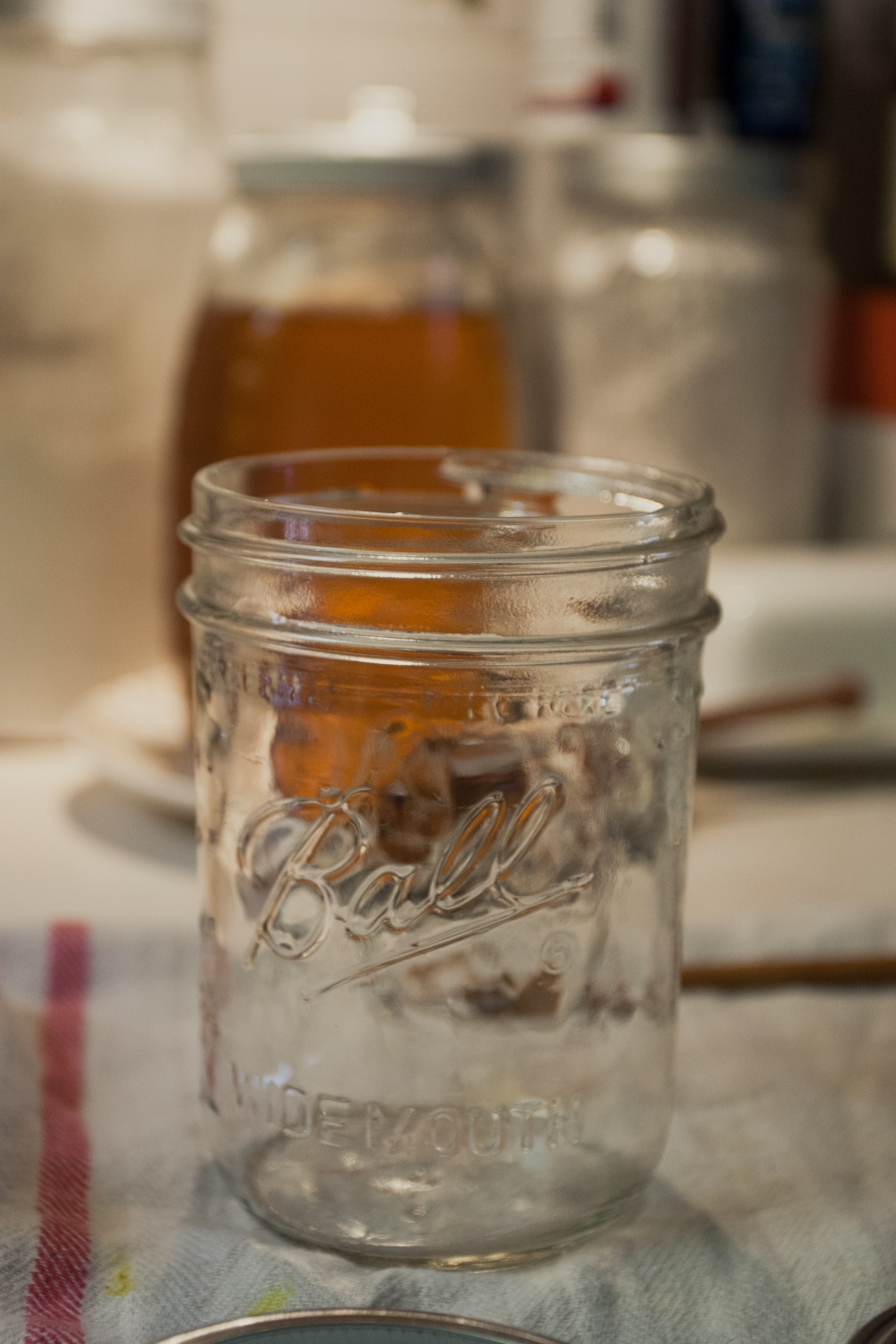
First up. . .
Canning
If you are not familiar with canning basics, check out this this link first. I used this recipe as a jumpoff point, with some slight tweaks. I used pint jars, added some dill, and used a mix of white wine and apple cider vinegar (because that's what I had). I got about 3 pint jars (I might have gotten 4, but I didn't prepare enough asparagus.)
Pickled Asparagus - 4 pints
- 4 bunches of asparagus
- 4 garlic cloves peeled
- 1 lemon, scrubbed, sliced and deseeded
- 4 teaspoons mustard seed
- 4 sprigs dill
- 2.5 cups vinegar
- 2.5 cups water
- 2.5 teaspoons pickling salt
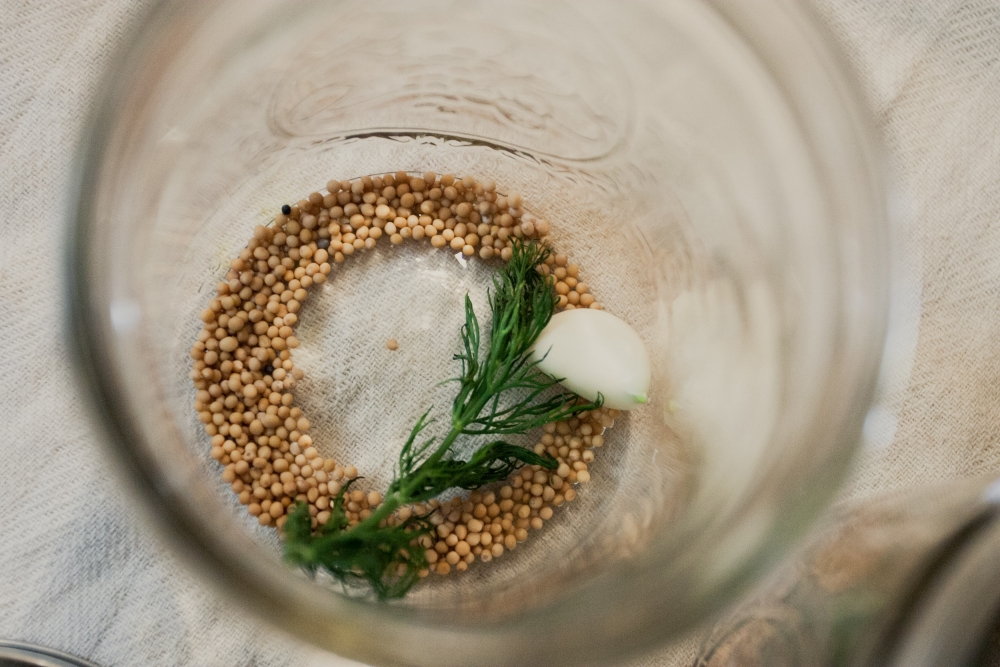
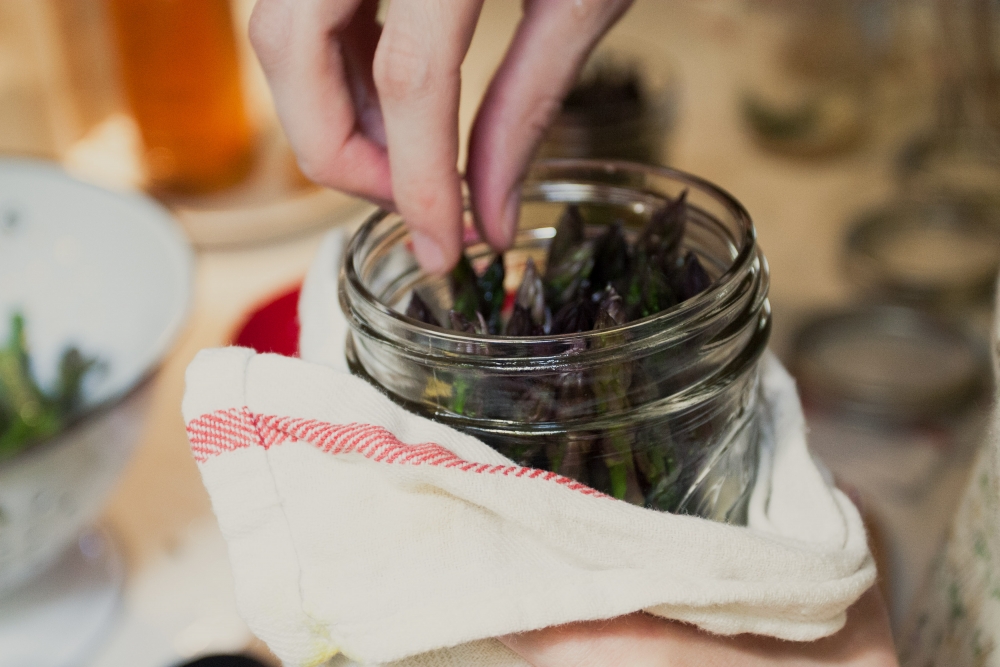
Prep hot water bath and sterilize jars for 10 minutes. Wash asparagus, and trim so that they fit in jars with 3/4 inch to spare. Put your lids in a few inches of water, heat to a boil, cover, and turn off burner. Add vinegar, water and salt to a pot and bring to a boil. Meanwhile, set your hot jars on a kitchen towel, add a clove of garlic, sprig of dill and teaspoon of mustard seed to each jar. Pack asparagus in tightly and slide two lemon slices down inside each jar. Ladel the hot pickling solution into each jar leaving 1/2 inch headspace. Release any large trapped air bubbles with a plastic knife or chopstick. Wipe rim, place lid, screw on band until finger-tip tight. Lower the jars back into the water, wait until the water returns to a rapid boil, process for 10 minutes and then lift jars and place them on a cutting board or towel until they are completely cooled. Then unscrew bands, check seals, and store.
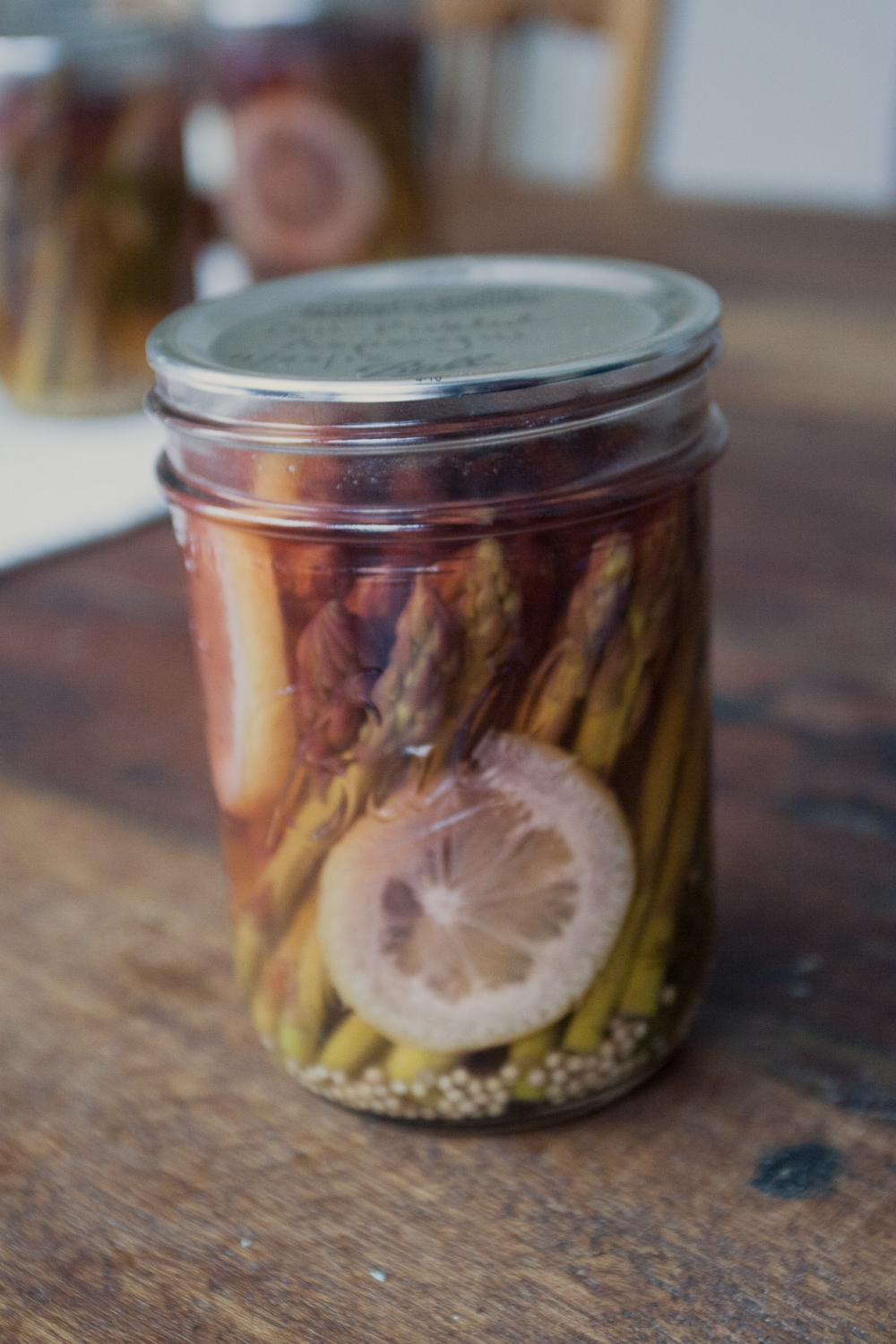
Lactofermenting
For the brine I used the dill pickle solution from Nourishing Traditions.
Lactofermented Pickled Asparagus
- 1 bunch of asparagus
- 1 tablespoon mustard seeds
- 2 tablespoons fresh dill, snipped
- 1 tablespoon sea salt (it must be an unrefined sea salt such as Celtic, Himalayan pink salt, or Real Salt. If your "sea salt" is white, then its refined and devoid of the minerals that help the lactfermenting process work properly AND which help make you healthy, so you should switch anyways)
- 4 tablespoons whey (or an additional tablespoon salt)
- 1 cup filtered water (tap water contains chlorine, which inhibits the process)
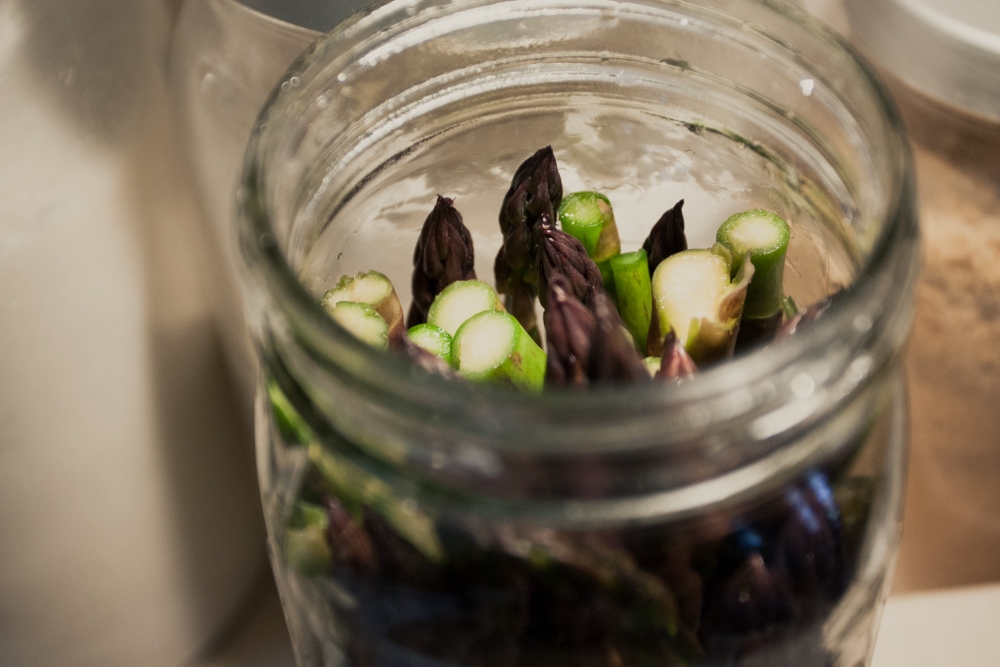
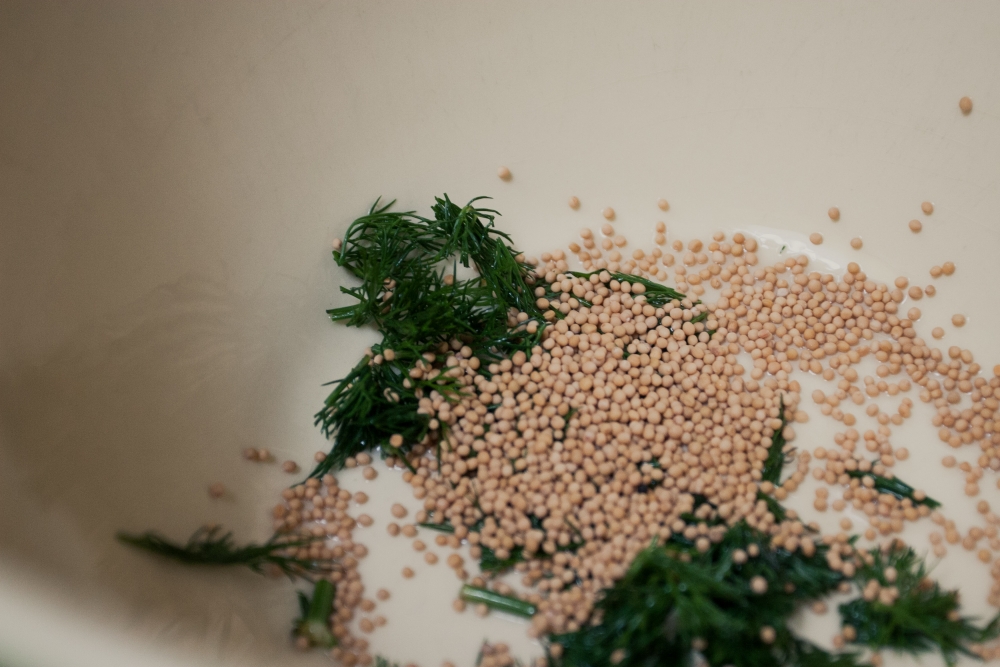
Wash asparagus, trim and pack into a meticulously cleaned quart sized jar (I cut in half and use tops and stalks). Combine remaining ingredients in a bowl and stir until the salt dissolves, or add to the jar and shake to thoroughly mix them. If necessary add extra water to entirely cover the asparagus. Then screw on the lid tightly and leave at room temperature for three days before moving to the fridge. The fermentation process produces a lot of gas, so I find it necessary to ever so gently break the seal on the lid by loosening the band once or twice a day to let the air out, and then quickly re-tighten. These will stay good in the fridge for 6 months.
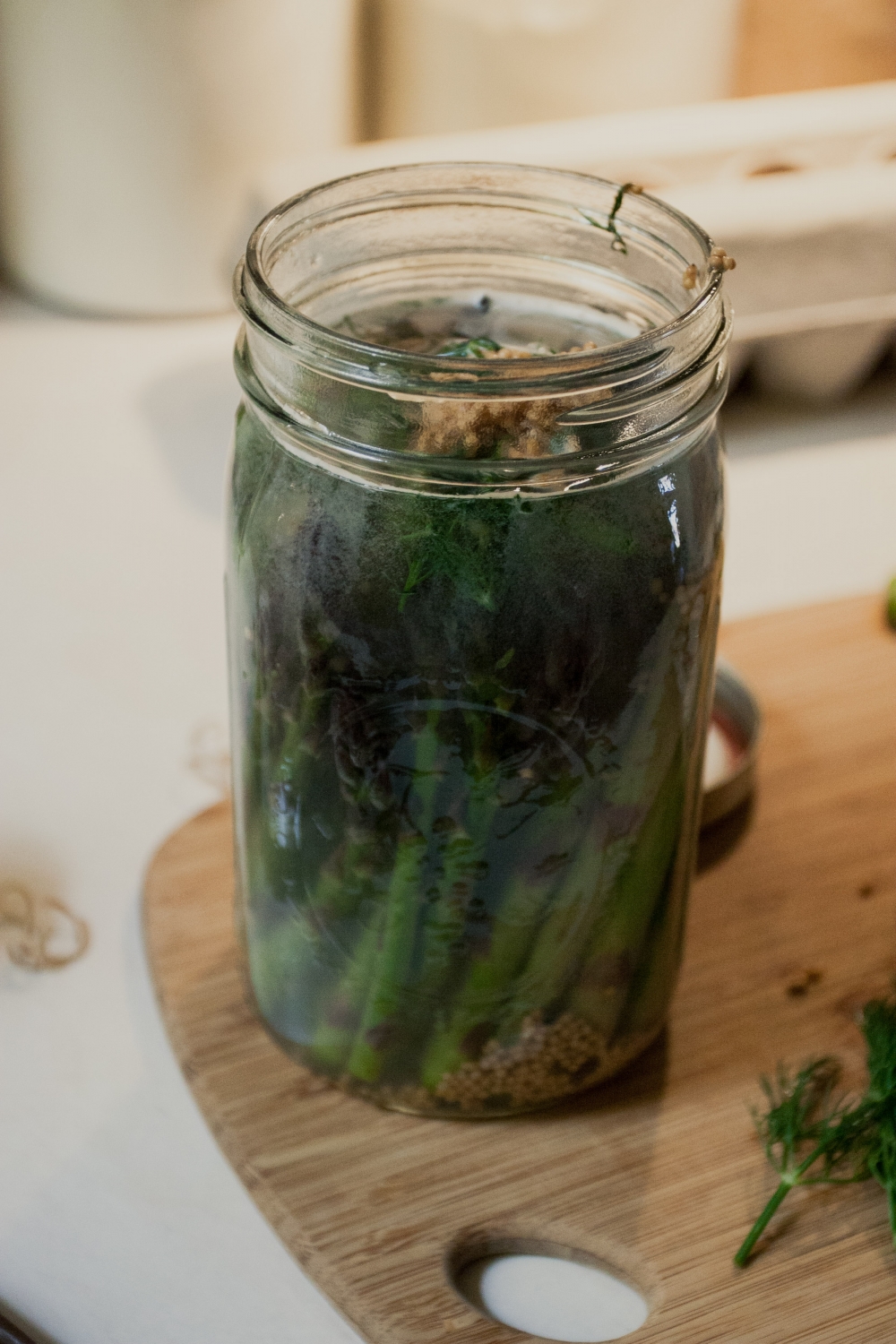
Freezing
This one is very straightforward. Wash and trim asparagus, blanche for 30 seconds to one minute in boiling water, then plunge into an ice bath. Lay out on a kitchen towel until dry, then roll up in paper towel, place inside a feezer bag, roll air out of bag, seal and store.


So what about you guys? Anybody started their summer preserving yet?

